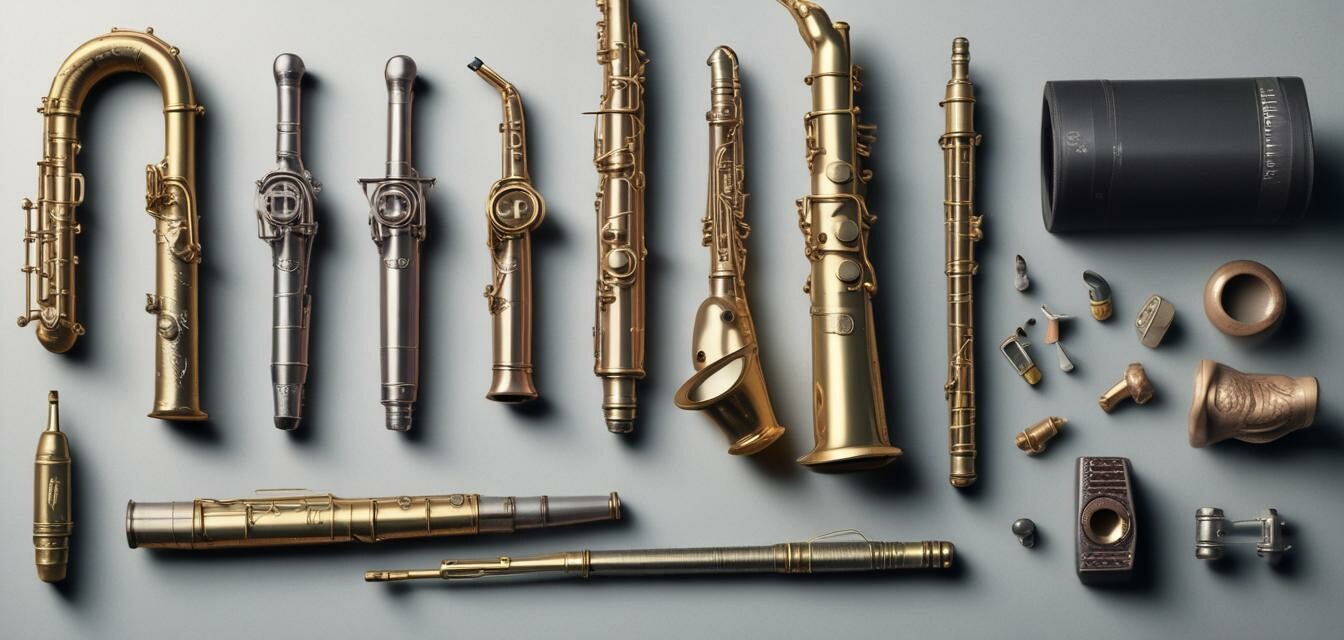
Essential Tools for Customizing Your Tenor Saxophone
Key Takeaways
- Customizing your tenor saxophone enhances your sound and performance.
- Essential tools include mouthpieces, pads, reeds, and cleaning kits.
- Understanding your playing style is crucial for effective customization.
- Regular maintenance tools ensure your saxophone stays in top condition.
Every tenor saxophone player knows the importance of personalization when it comes to creating a unique sound. Whether you're a beginner or a seasoned player, there are essential tools that will help you customize your instrument to fit your playing style and enhance your musical expression. In this article, we will dive into the essential tools for customizing your tenor saxophone, giving you all the information you need to elevate your sound.
Why Customize Your Tenor Saxophone?
Customization allows you to adapt your tenor saxophone to your playing needs, whether it's for jazz, classical, or contemporary music. It involves selecting different components that affect tone, comfort, and overall playability. By making informed choices, you can ensure that your instrument not only reflects your style but also supports your musical journey.
Key Components for Customization
Here we explore the essential tools and products that will help personalize your tenor saxophone.
| Component | Description | Purpose |
|---|---|---|
| Mouthpieces | The piece attached to the end of the saxophone's neck where you blow. | Modifies tone quality and response. |
| Pads | Felt pads covering the tone holes. | Controls airflow and leakage for better sound. |
| Reeds | Thin pieces of material that vibrate to produce sound. | Influences tone, pitch, and responsiveness. |
| Cleaning Kits | Tools and materials for maintaining saxophone hygiene. | Prevents buildup and prolongs instrument life. |
| Neck Straps | Straps that support the saxophone while you play. | Provides comfort and ease of play. |
Understanding Your Playing Style
Your playing style significantly influences the type of customization you will benefit from. Here are a few questions to help identify your needs:
- What genre do you mostly play? (Jazz, classical, etc.)
- Do you prefer a softer sound or a brighter, more powerful tone?
- How often do you perform? (Regularly, occasionally, etc.)
- What is your skill level? (Beginner, intermediate, advanced)
Popular Customization Options
Below is a quick summary of popular options that cater to different playing styles:
| Customization Option | Best for | Considerations |
|---|---|---|
| Hard Rubber Mouthpiece | Jazz musicians | Warm tone, requires good reed choice. |
| Metal Mouthpiece | Classical and rock players | Bright sound, can be harder to control. |
| Natural Cane Reeds | All styles | Great tonal quality, needs regular replacement. |
| synthetic Reeds | All styles | Durable and easy to maintain, but may lack some warmth. |
| Custom Pads | Advanced players | Ultimate control over sound, may require professional installation. |
Maintaining your Saxophone
Regular maintenance is crucial for ensuring your saxophone sounds its best. Here's a list of tools you should consider having:
- Swab for cleaning inside the body.
- Microfiber cloth to wipe down the exterior.
- Screwdriver for tightening/replacing pads.
- Valve oil to keep pads moving smoothly.
- Tube brushes for thorough cleaning of neck and mouthpiece.
Tips for beginners
- Start with basic tools and gradually upgrade as you learn.
- Seek advice from experienced players in your community.
- Experiment with different mouthpieces and reeds to find your ideal setup.
- Join online forums for saxophone players to share experiences and advice.
Conclusion
Customizing your tenor saxophone is about enhancing your musical expression and comfort while playing. From selecting the right mouthpiece to maintaining your instrument, these essential tools can help you develop a sound that's uniquely yours. Embark on your customization journey today!
Pros
- Improved sound quality and performance.
- Enhanced comfort and playability.
- Personalized expression through your instrument.
Cons
- Customization can be costly.
- Learning curve for selecting appropriate tools.
- Over-customizing may lead to unwanted tonal effects.
For more information on maintaining your instrument, check out our Cleaning & Maintenance section. Looking for the right accessories to enhance your experience? Visit our Electronic Accessories page for ideas!